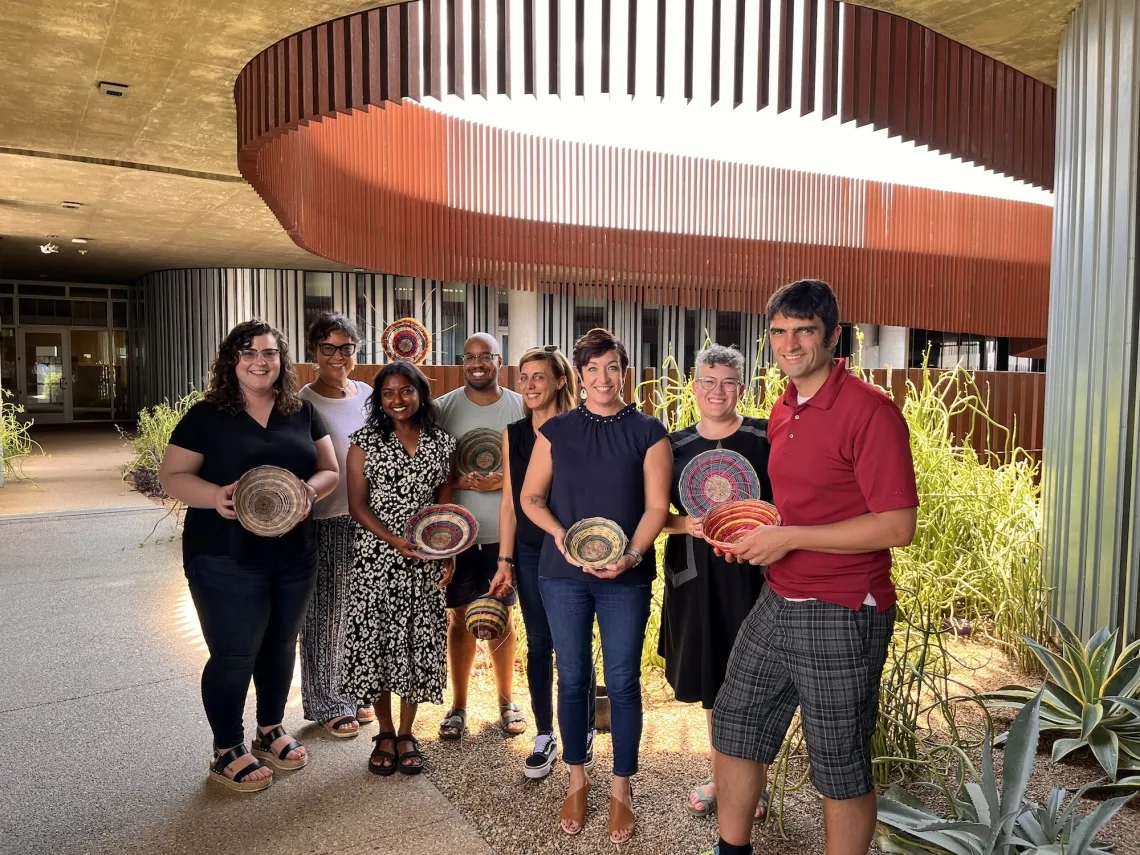University of Arizona Researchers study ways to increase diversity and engagement in STEM

The REEDS Postdoctoral Fellows and their university mentors wove baskets during an orientation event as a metaphor for weaving together the communities with the research they will do during the fellowship. From left: Abby Rocha, Regina Deil-Amen, Shakuntala Devi Gopal, Sy Simms, Guada Lozano, Judy Marquez Kiyama, Heather Haeger and Nick Witt.
TUCSON, Ariz. (13 News) - Four researchers from the Research on Educational Equity and Diversity in STEM program, or REEDS, began their work this summer on how to increase STEM participation by students in underrepresented groups, like students of color and LGBTQ+ students.
“How do we connect a world-class research institution with the community,” is a question that Heather Haeger asked herself and continues to ask as she undergoes the study for the next two years.
Haeger is the lead investigator for the REEDs program.
Here in Arizona, subjects in STEM haven’t achieved a perfect score. Last year in Pima County, only 31 percent of students passed their state math test, and only 24 percent passed their science tests.
Students with disabilities, students of color and others from an underrepresented group had a much lower passing rate than that.
“STEM has a huge problem with weeding people out and being exclusionary in many ways,” said Haeger.
“For us, it’s really about identifying issues communities care about and then finding the STEM that’s in those issues and connecting it to students.”
There are four main aspects to the REEDs program: Cultural Responsiveness, Income and First-Generation Students, Community College Transfer students, and how to train educators on increasing diversity in STEM.
Working with teachers is extremely important to discuss a community’s specific needs when it comes to STEM and how to serve them.
One Douglas teacher, Danitza Moreno, has taught math for 13 years and says fostering an interest in STEM should begin well before a student’s high school years.
“I love math and it’s been my passion for a long time, and right now mostly everyone wants to be a YouTuber. “And it’s not a bad thing, but I think it’s because of what they see,” said Moreno.
Moreno says that more visits from people in STEM to rural areas like Douglas or Sierra Vista, as well as having more programs year-round to increase engagement, is crucial to inspire students to achieve a career in STEM down the line.
Watch the Broadcast Here

